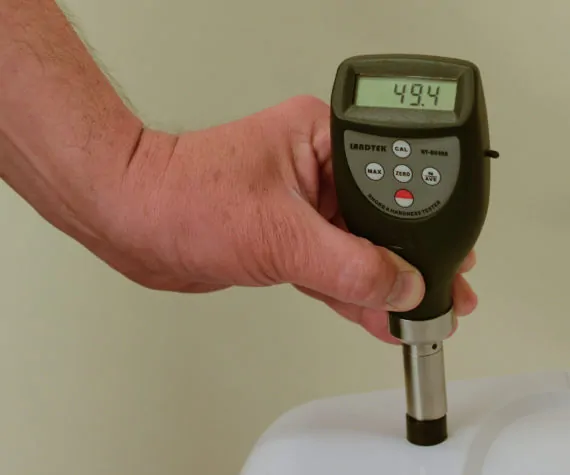Shore A hardness explained

Shore A Hardness is a measure of a rubbers ability to withstand indentation. The Shore A hardness scale was created by Albert Ferdinand Shore, who used a pre-existing durometer to measure hardness in the 1920s.
Shore A is Shore’s scale for general purpose rubbers. There are other scales, for example, Shore 00 for rubbers and gels that are very soft, and Shore D for very hard rubbers, semi-rigid plastics and hard plastics.
The Durometer used, features a standard flat-faced needle and a calibrated spring which presses the needle into the test sample. The hardness is determined by the penetration depth of the needle. The more the needle penetrates the rubber, the softer it is, the less it penetrates, the harder the rubber is. This applies to rubber in a variety of forms, including rubber keypads and other types of rubber mouldings.
Table Hardness Examples
Shore A
- 20A chewing gum
- 30A elastic band
- 40A inner tube
- 50A rubber pencil eraser
- 55A Door seal
- 60A Car tyre tread – wiper blades
- 70A Trainer sole
- 78A Soft skateboard wheels
- 80A Shoe Heel
- 85A Tap Washers
- 90A Phone cord
- 95A Fork Lift solid tyres
- 98A Hard Skateboard wheels
[For information: The latest ISO standard for rubber hardness is ISO 48-4:2018 Rubber, vulcanised or thermoplastic Determination of hardness Part 4: Indentation hardness by durometer method (Shore hardness).]
As mentioned, Shore A hardness is a measure of the relative resistance to indentation, it doesn’t predict other properties like flexibility, resistance to scratches, abrasion or strength of rubber or rubber mouldings.